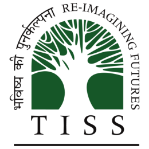Fifth Lecture in the series on Migration at Patna Centre, TISS: "They must have to go therefore, elsewhere": Mapping the Many Displacements of Bengali Hindu Refugees from East Pakistan, 1947 to 1960s
Archived
 Nov. 26, 2016
Nov. 26, 2016
Venue: SAP Building, History Department, Darbhanga House, Patna University.
Speaker: Dr. Anwesha Sengupta, Research and Programme Associate, Calcutta Research Group, Kolkata.
This paper discusses the government policy of “dispersal” of Bengali Hindu refugees in 1950s and 1960s, as a peculiar form of forced migration. The refugees coming from East Pakistan seemed to have preferences for particular areas in West Bengal. Consequently, Calcutta, Nadia and 24 Parganas had significantly higher refugee population compared to the other areas of the state. Similarly, certain states in India received very few refugees whereas East India and North-West India had millions of displaced population. With a large number of “extra” people, who being already displaced once seemed displaceable again to the regional and the central government, the policy of dispersal was conceived. The idea was to remove the refugees from Calcutta and other congested areas, if necessary by force, and to resettle them in less populated areas like Andaman Islands, Bihar, Orissa, United Provinces and Dandakarnaya. This was a different type of forced migration altogether where the refugees were forced to leave one particular place for a specified destination - a destination that was not chosen by them at all. This paper will discuss the practice of dispersal as a specific form of forced migration. The paper will have four sections discussing:
- who had to go and who could stay back in Calcutta,
- the ways in which the government manipulated or forced the refugees to go to the above mentioned areas,
- the condition of refugees in the new locations, and
- the reasons behind high rate of “desertion” of the refugees from these areas.
While doing so, this paper will illustrate some features of post-colonial Indian state and it will also show that for many of the partition’s refugees’, crossing the Radcliffe Line marked the mere beginning of their long lives as migrants.
Jointly Organised by: History Department, Patna University and Tata Institute of Social Sciences, Patna Centre.
About Patns Centre at TISS
The Centre for Development Practice and Research is a Patna-based centre of the Tata Institute of Social Sciences, Mumbai. The Centre has been established, with support from the Takshila Educational Society, with the objective to pursue research and publication, limited teaching and direct extension work in the community. [ View Centre's webpage ]
Presently, the Centre is engaged in research on migration, school education and caste-based practices. It has initiated a lecture series on Migration and will be conducting a seven-day orientation course on Migration from February 20 to 26, 2017. For details, visit: http://www.tiss.edu/view/5/homepage-data/homepage-events-and-announcements/orientation-programme-on-migration/











